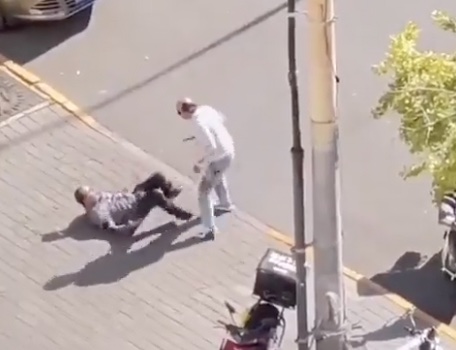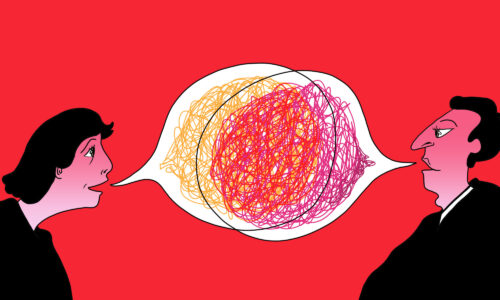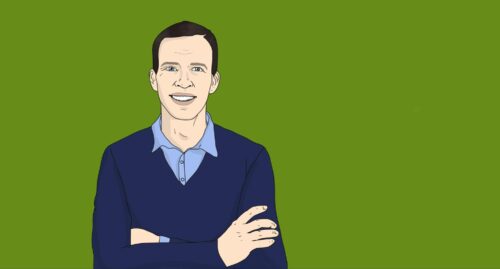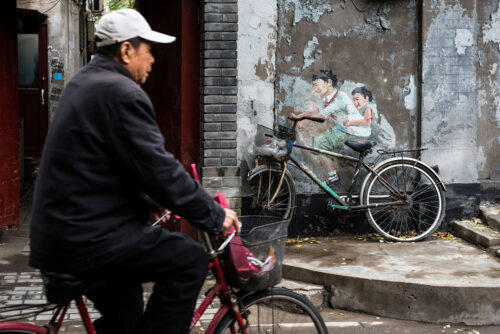With 11 million tests, China contains COVID-19 where the U.S. fails
While Trump spreads misinformation about the role testing plays in combating COVID-19, China is effectively deploying testing on a mass scale. In Beijing, officials tested 11 million residents in just 25 days, finding and isolating 335 cases of infection.
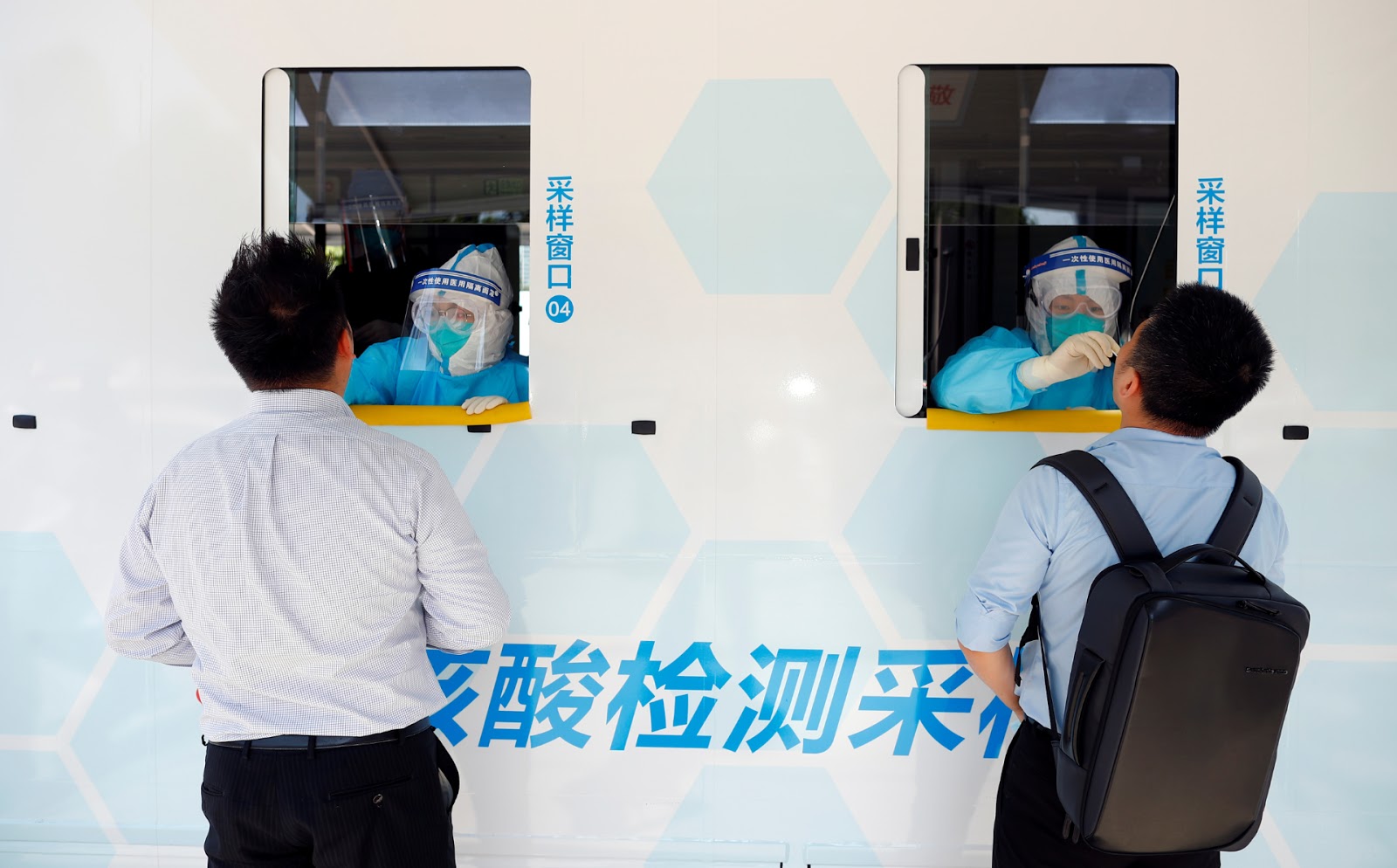
This morning, President Trump boasted that the United States had cumulatively tested 40 million people for COVID-19, and repeated a false narrative that increased testing — “much bigger and better” than other countries, he said — is responsible for America’s alarmingly fast-rising case numbers. In fact, only recently has the U.S. consistently tested 500,000 or more people per day, which experts have said for months is the bare minimum for the country to track and contain COVID-19 outbreaks.
An objective look at testing worldwide shows that China, not the United States, is the country that has most effectively rolled out COVID-19 testing in recent months. For example, 11 million people were just tested in Beijing alone, in a matter of weeks, to control an outbreak that peaked with only 335 total COVID-19 cases.
China continues to flex its industrial muscle by pushing out a whopping 5 million tests every day, nearly 10 times as many as in the United States, where many local health systems continue to complain of test shortages.
China’s nationwide manufacturing effort is one of the reasons why Beijing’s outbreak in the Xinfadi Market, detected on June 11, was contained in less than a month — on July 8, the city reported its third straight day of zero new infections. On a closer look, we can find at least six key factors that contributed to China’s COVID-19 testing and containment efforts in its capital and elsewhere.
1. Scale
In the two weeks after the Xinfadi Market outbreak, Beijing was able to test a total of around 11 million people — about one-third of its residents. This capacity is the product of a larger effort in China to become the world’s leading test producer. The central government has previously implemented mass testing campaigns in Wuhan — just to make sure the city was clear of COVID-19 in May — and the northeastern city of Mudanjiang.
Compare these efforts with those in America, where the COVID-19 tracking project reports that daily nationwide test production only began to exceed half a million tests per day as of mid-June. This milestone represents the bare minimum of daily testing recommended by experts, with the highest estimates reaching up to 25 million tests every day. Ignoring reality, President Trump clings to the false narrative that America’s unrivaled testing capacity can explain the huge gap in cases between the U.S. and China.
2. Pooled testing
Beijing has also employed “pooled” testing in order to make each test more efficient. Rather than testing every sample taken from each individual separately, pooled testing mixes together samples of about five people into “clusters” and then tests them all at once with just one test kit. If the results come back negative, no need to waste more than one test. If a cluster’s test comes back positive for COVID-19, then medical workers can resort to individual testing on everyone in that cluster. In areas of low infection, this method saves vital test kits for later, as The Conversation explains.
Pooled testing could have been a clever way to compensate for America’s limited manufacturing capabilities, but the U.S. stalled in its implementation and it may now be too late. National Institute of Allergy and Infectious Diseases Director Dr. Anthony Fauci is reportedly in talks on rolling out this method, and some small pockets have started to adopt the program. Unfortunately, pooled testing is only effective in low-infection areas. Given the coronavirus’s strong foothold throughout the country, it may be a forgone option, at least for now.
3. Mandate
China has been criticized for its draconian lockdown measures, but strong social control has some obvious benefits during a pandemic. One of these benefits is the ability to bring everyone, even those with a low risk of infection, out to testing booths.
In Beijing, teams of grassroots “community officials” — formerly ideological promoters for the Communist Party — use messaging apps such as WeChat to inform citizens of when and where they should report for testing.
The testing campaign in Beijing is not technically compulsory in most areas — it is often urged more than it is forced, and according to some sources in Wuhan it is not necessary for anyone under the age of six — but most testing sites ask for negative results from an earlier test in order to opt out. For those whom the local CDC does determine to be mandatory testing candidates, China put out a strict set of laws in February to ensure compliance.
In America, there are no comparably intrusive community liaisons (beyond Andrew Cuomo’s Twitter). Testing remains optional for most people, and cases continue to grow.
4. Cost
Cost can be a major barrier to certain groups of people getting tested for COVID-19, especially during a historic crisis in unemployment. In Beijing, testing is free for the 11 million residents around the recent outbreak at one of their 2,200 testing sites. For the rest of the population, a test will cost between $17 and $37.
In the U.S., the land of exorbitant insurance premiums, the cost of a test is much more in flux. State governments have set up free testing sites in major impacted cities, but nowhere near the scale of Beijing’s operation. Even at these free kiosks, you may still be billed. While some with insurance can be tested for as low as $23, predatory price gouging has led to costs of up to $2,315. The average range in the U.S. remains between $50 and $200.
5. Throat swab vs. nasal swab
This one may seem minor, but it’s worth a mention.
In Beijing and China at large, the throat swab is the most common method of COVID-19 detection. The scientific opinion on the efficacy of the oral test remains in flux — a recent meta-analysis found that there is not yet a clear consensus on which form of test is preferable.
America sticks to the nasopharyngeal swab, which involves a 15-second insertion of a six-inch Q-tip into the back of one’s nasal cavity. Oral tests have been described as noticeably more pleasant (as opposed to the nasal test, described as more of a “jabby brain poke”).
6. Innovation
China is now on the cutting edge of some anti-coronavirus technology. Take the “mobile nucleic acid screening kiosk,” for example, a piece of tech rolled out in Beijing that reportedly improved efficiency, safety, and accuracy of testing results. After a trial period during the latest outbreak, a Medsci.cn writer suggested that the second generation be fast-tracked.
In sum, experts agree that only widespread testing campaigns can allow economies to reopen effectively. President Trump can blame China all he wants for “unleashing” COVID-19 on the world early in 2020, but leaders everywhere could study China’s more recent experience as a road map out of this crisis.

